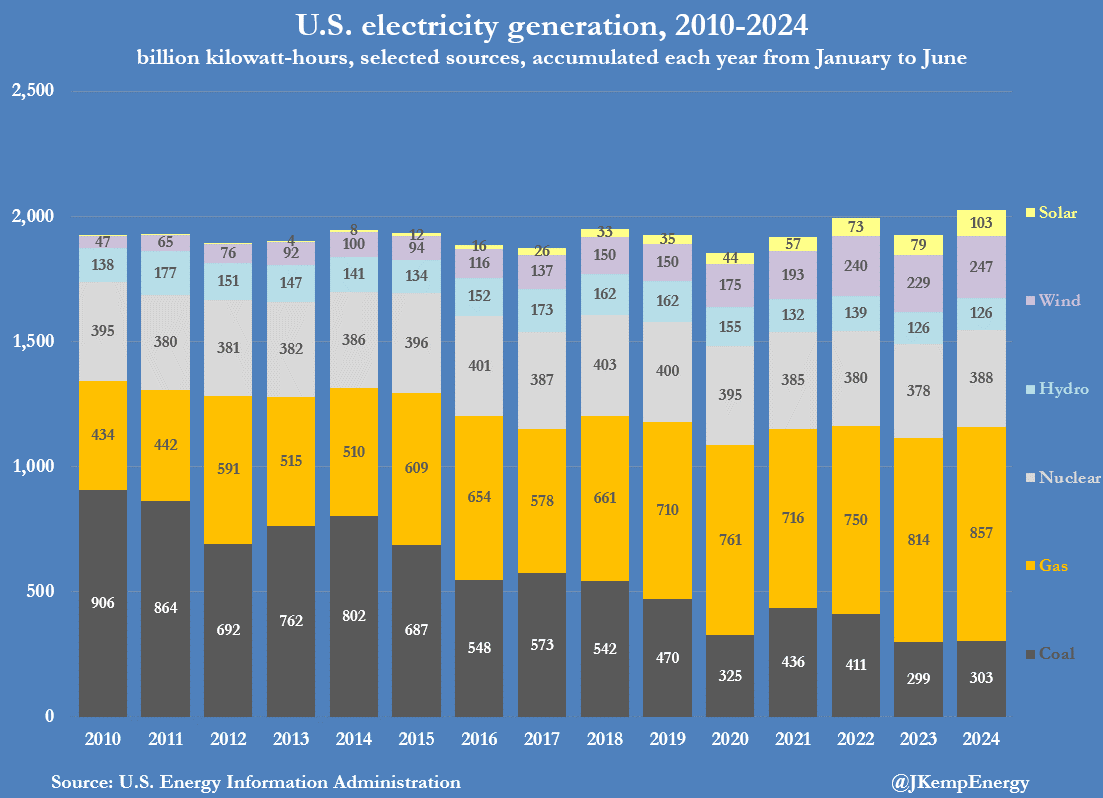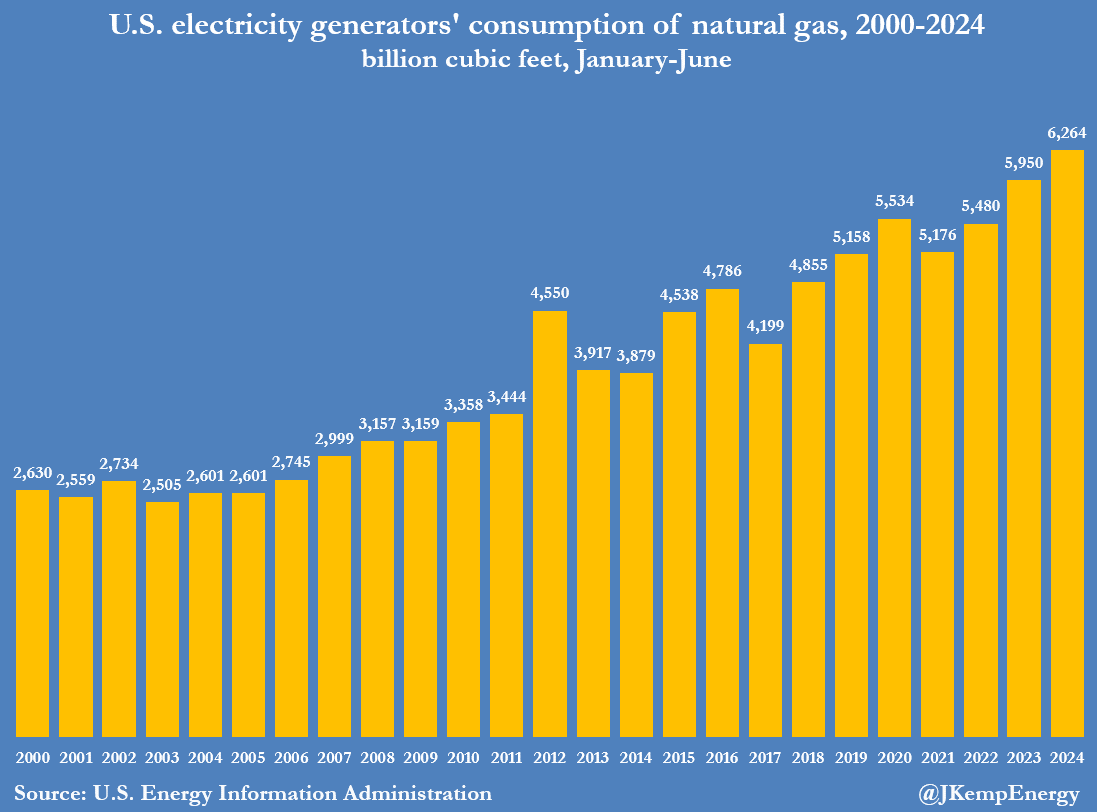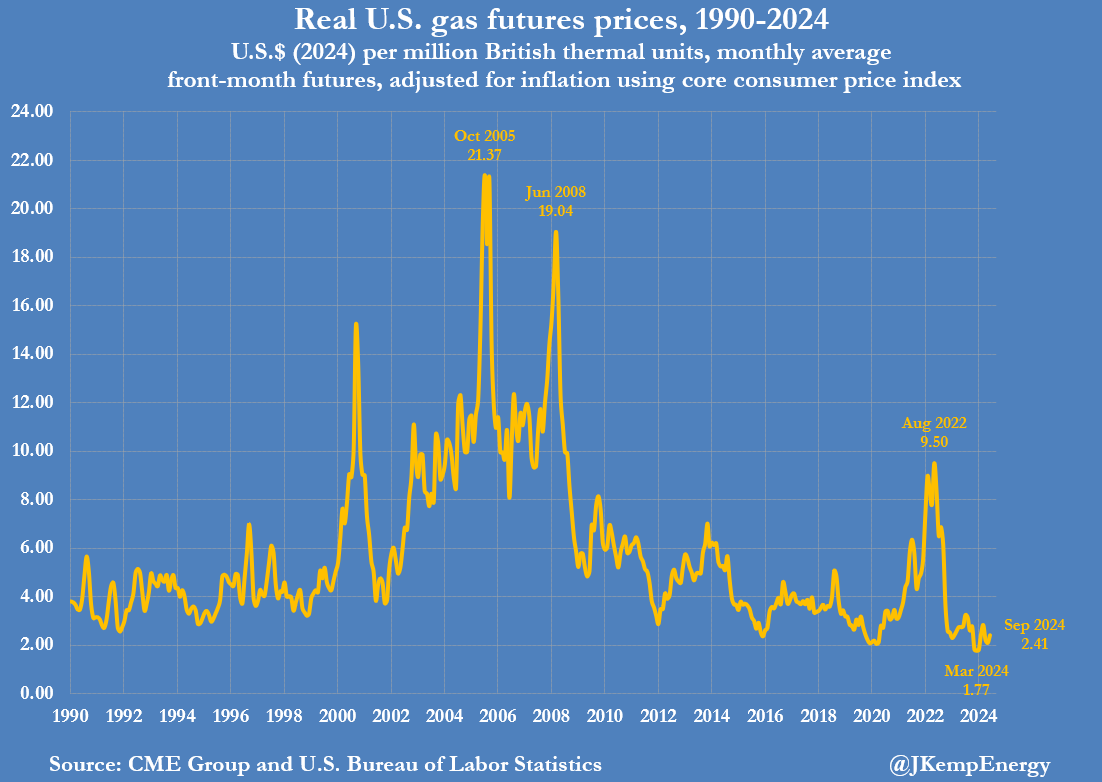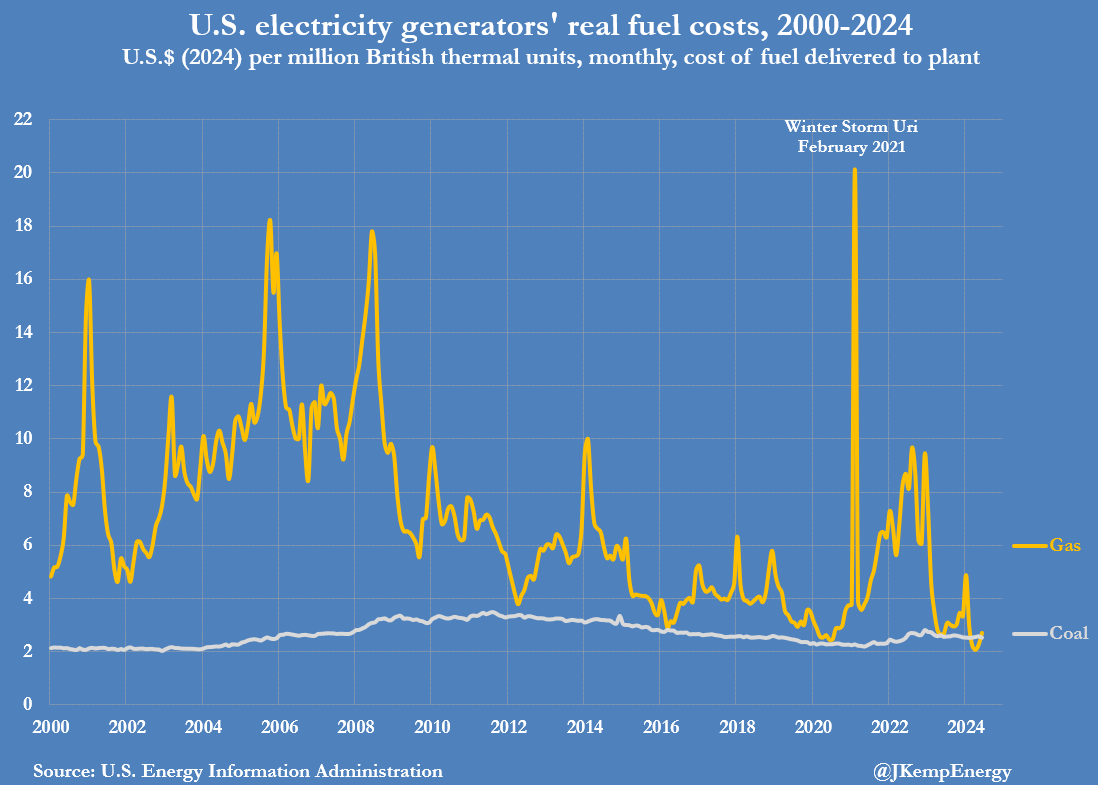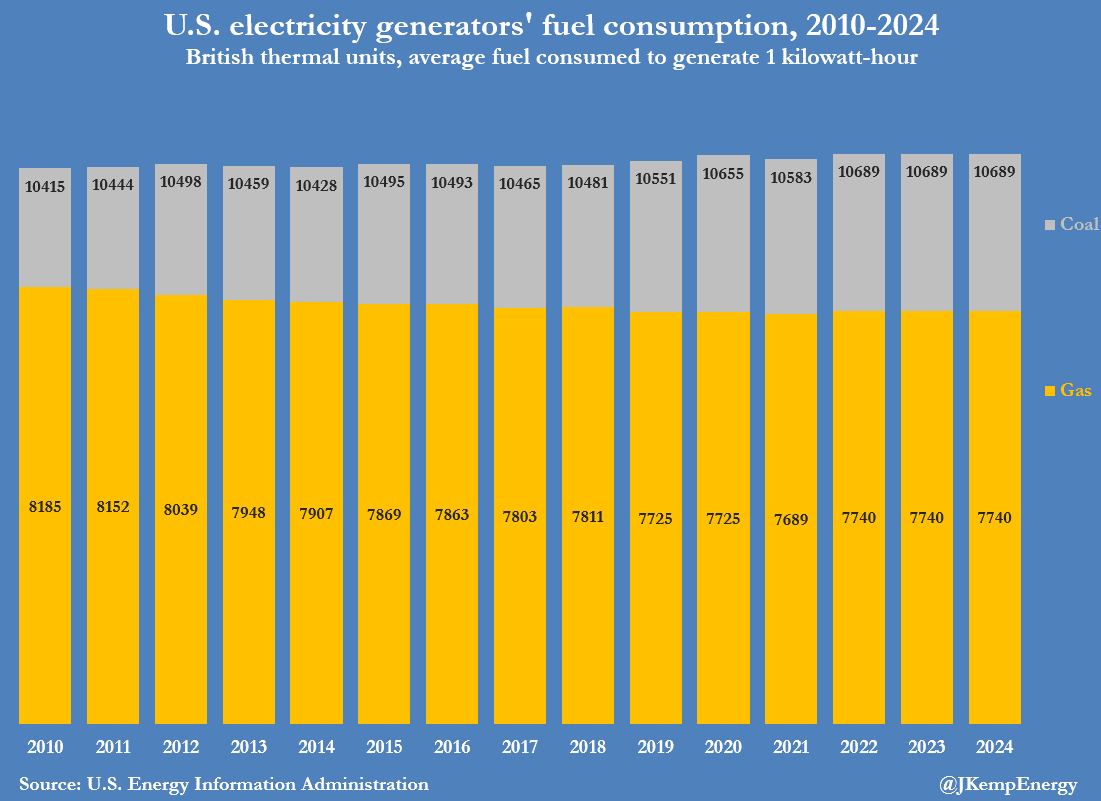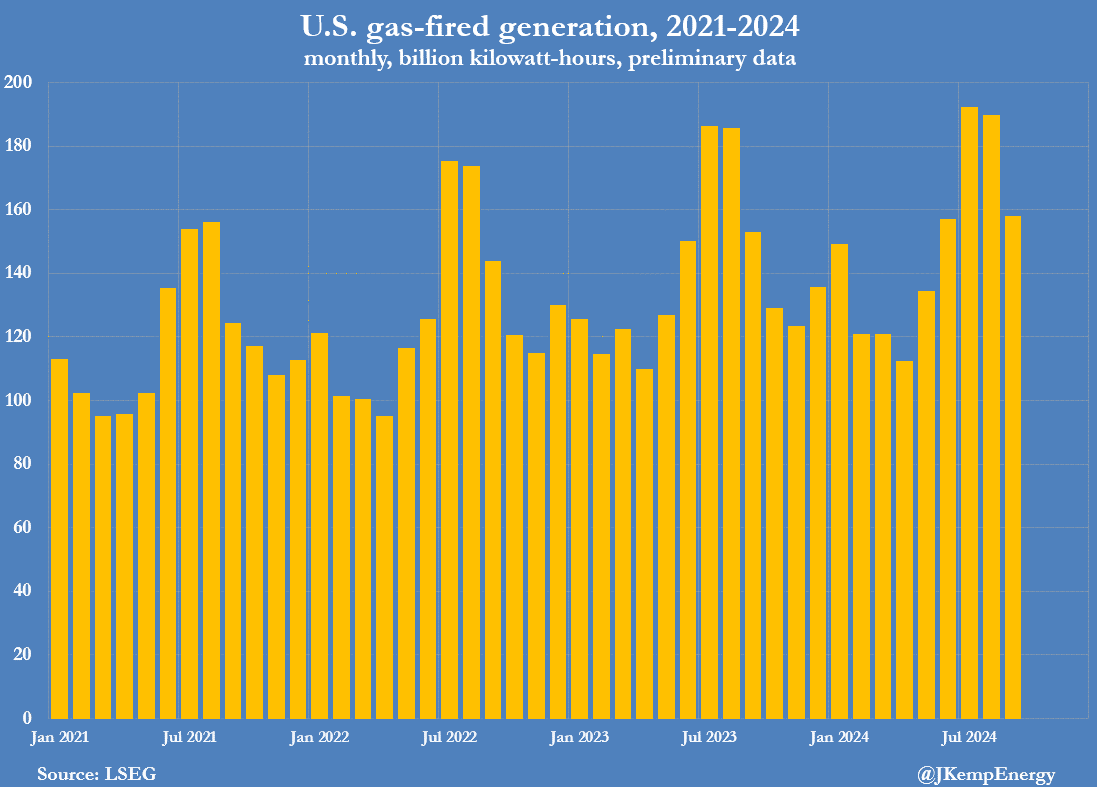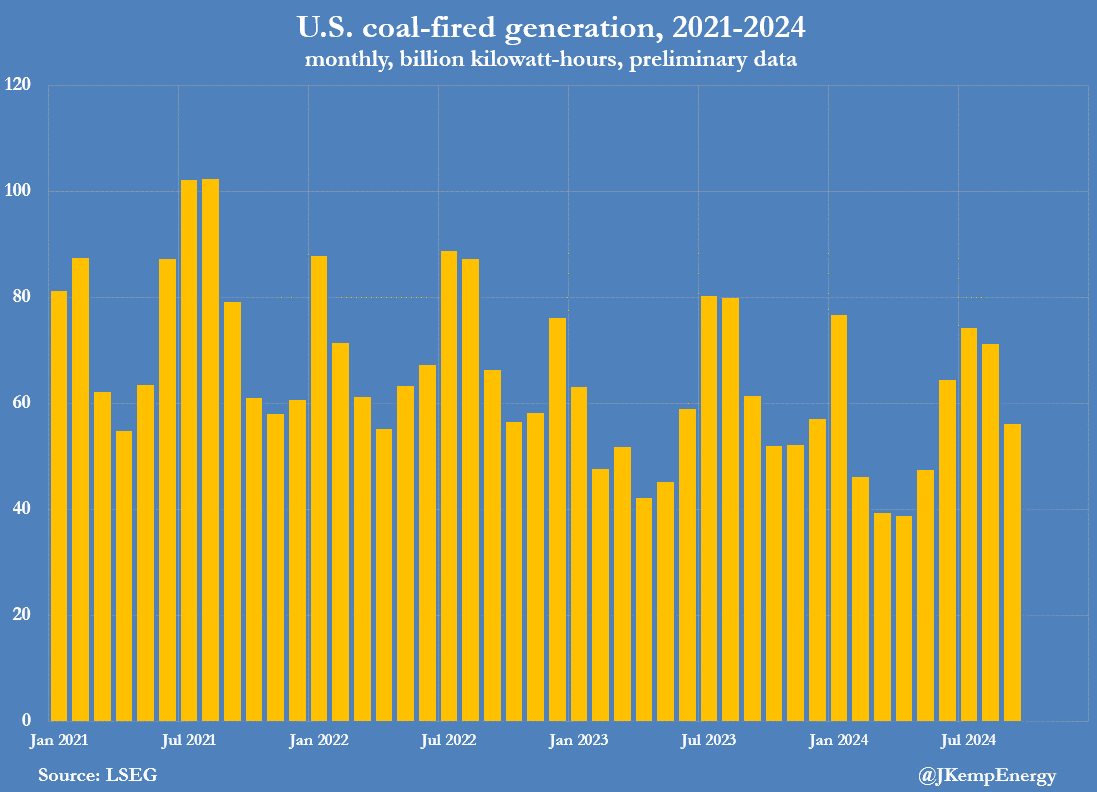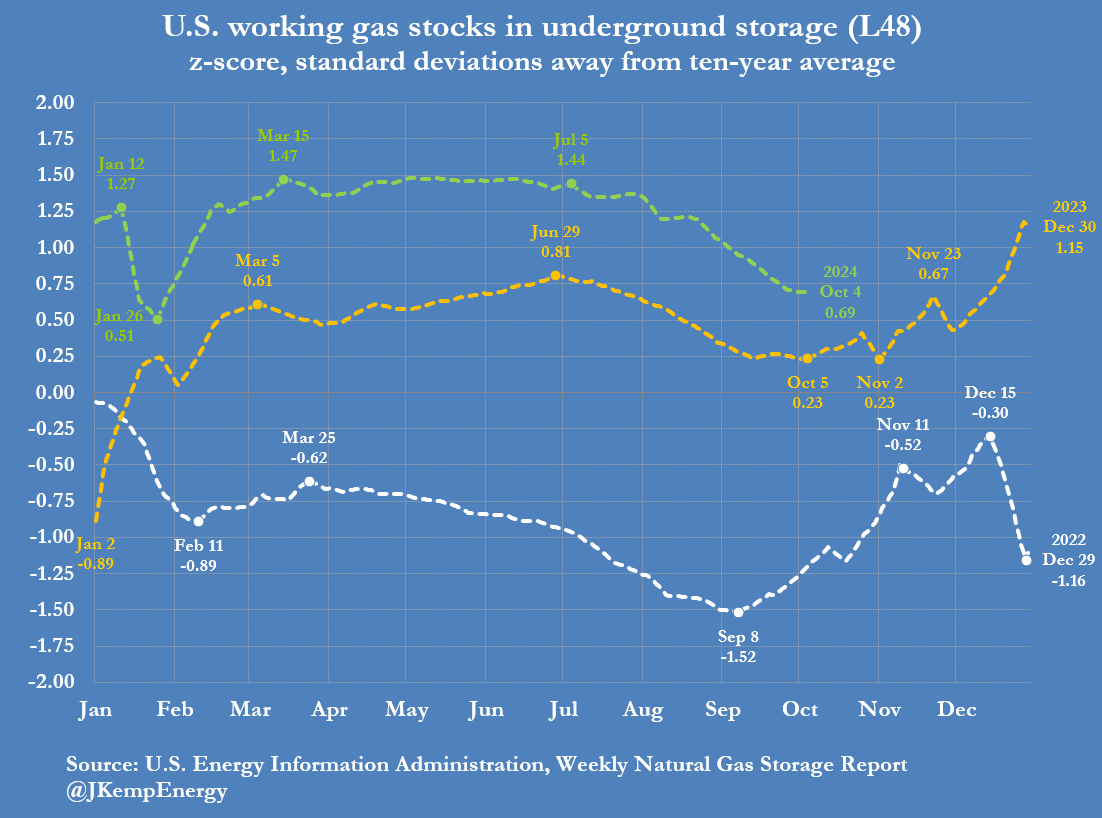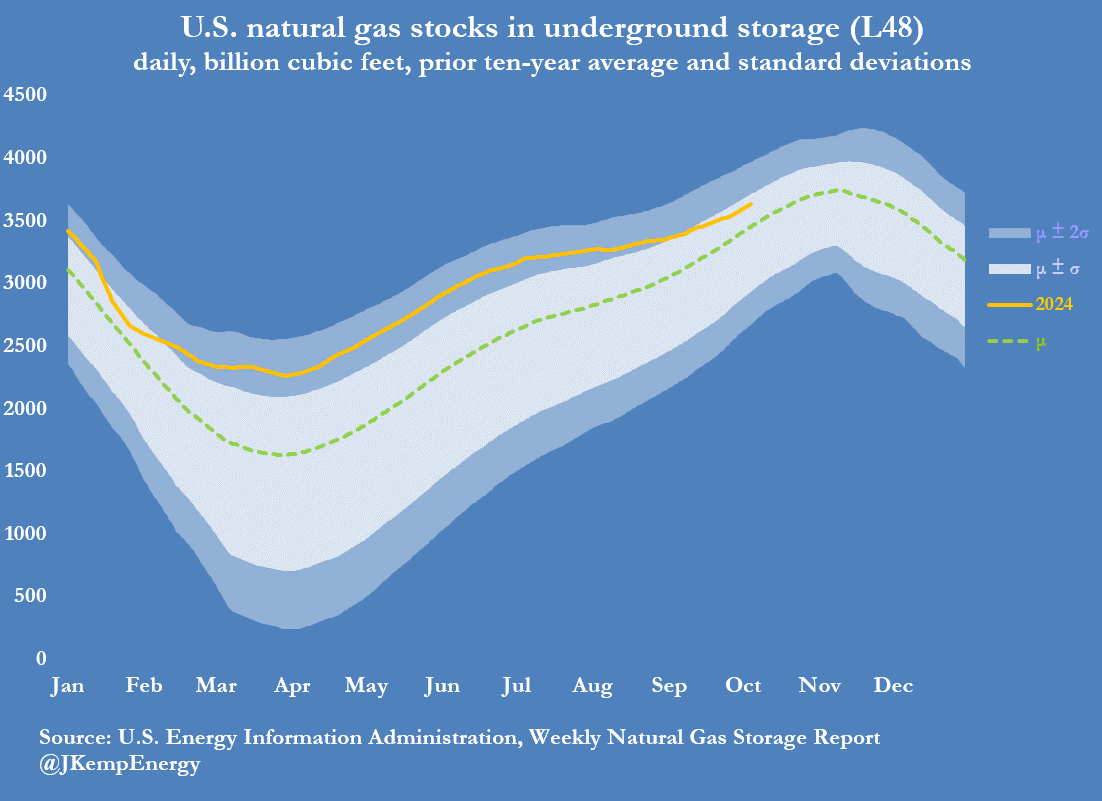US Electricity Generators Binge On Ultra-Cheap Gas
By John Kemp of Kemp Energy
Exceptionally low gas prices have driven gas-fired generation to a record high in the United States, in the process eliminating most of the excess inventories inherited from the very mild winter of 2023/24.
U.S. electricity generators produced a record 2,069 billion kilowatt-hours (kWh) in the first six months of 2024, an increase of 98 billion kWh (5%) compared with the same period a year earlier.
Most of the extra electricity came from gas-fired units (+43 billion kWh), solar parks (+24 billion kWh) and wind farms (+19 billion kWh), with smaller contributions from nuclear (+10 billion kWh) and coal (+4 billion kWh).
Gas-fired units produced a record 857 billion kWh, and accounted for 41% of all generation, which was also a record high, according to data from the U.S. Energy Information Administration (EIA).
As a result, gas generators consumed a record 6,264 billion cubic feet (bcf) of fuel, an increase of 314 bcf compared with 2023.
RECORD LOW GAS COSTS
The gas generation boom has been driven by extraordinarily cheap fuel, with prices declining to the lowest for more than five decades in March, after adjusting for inflation.
Gas generators were able to run for many more hours, including less-efficient single-cycle gas turbines and steam units, which normally only operate at times of peak demand.
Gas units seized share from coal-fired generators as the gas costs dipped below coal on an energy-contained basis between March and May, the first time this had happened since 1975.
On average, gas generators are more efficient, requiring 7,740 British thermal units of fuel to produce each kilowatt-hour of electricity, compared with 10,689 British thermal units for coal generators.
Because of their efficiency advantage, gas units can compete with coal when gas prices are as much as 30-40% more expensive.
Between March and May, however, gas was 10-20% cheaper, creating an enormous financial incentive to switch to gas.
SUMMER DEMAND PEAK
Since the start of the third quarter, gas generators have continued to produce record amounts of electricity, mostly at the expense of coal, according to data published by transmission operators.
In the Lower 48 states, gas units generated a record 540 billion kWh between July and September, up from 525 billion kWh in the same period in 2023.
Gas generation increased even though total electricity production was broadly flat compared with a year earlier.
Extra gas generation came at the expense of coal, where generation slipped to 201 billion kWh down from 221 billion kWh in 2023.
INVENTORIES NORMALIZE
Surging gas generation has combined with slower gas production and an increase in liquefied natural gas (LNG) exports to eliminate most of the surplus fuel carried over from last winter.
Working gas stocks in underground storage rose by just 430 bcf over the summer quarter, the smallest seasonal increase since at least 2010, and 45% less than the average for the last decade.
By September 30, inventories were just 185 bcf (+5% or +0.70 standard deviations) above the prior ten-year seasonal average.
The surplus had narrowed from 537 bcf (+21% or +1.42 standard deviations) at the end of June and 634 bcf (+39% or +1.36 standard deviations) at the end of March.
Gas prices have started to climb gradually as the surplus has eroded: front-month futures prices have averaged $2.80 per million British thermal units so far in October up from a low of $1.75 in March.
But futures are still below the inflation-adjusted averages of $3.24 in October 2023 and $6.52 in October 2022, and barely above the cost of coal.
Gas generation is likely to continue setting record highs unless and until futures prices climb above $3.00-3.25 on a sustained basis.
More markets stories on ZeroHedge

"Damning Conduct": FBI Agents Stationed In Asia Paid For Sex From Prostitutes Over Several Years

Millionaire Fitness Coach Charged For Keying Tesla In Washington

SpaceX Offers Starlink To Myanmar, Thailand After 1000 Dead In Massive Earthquake
NEVER MISS THE NEWS THAT MATTERS MOST
ZEROHEDGE DIRECTLY TO YOUR INBOX
Receive a daily recap featuring a curated list of must-read stories.




